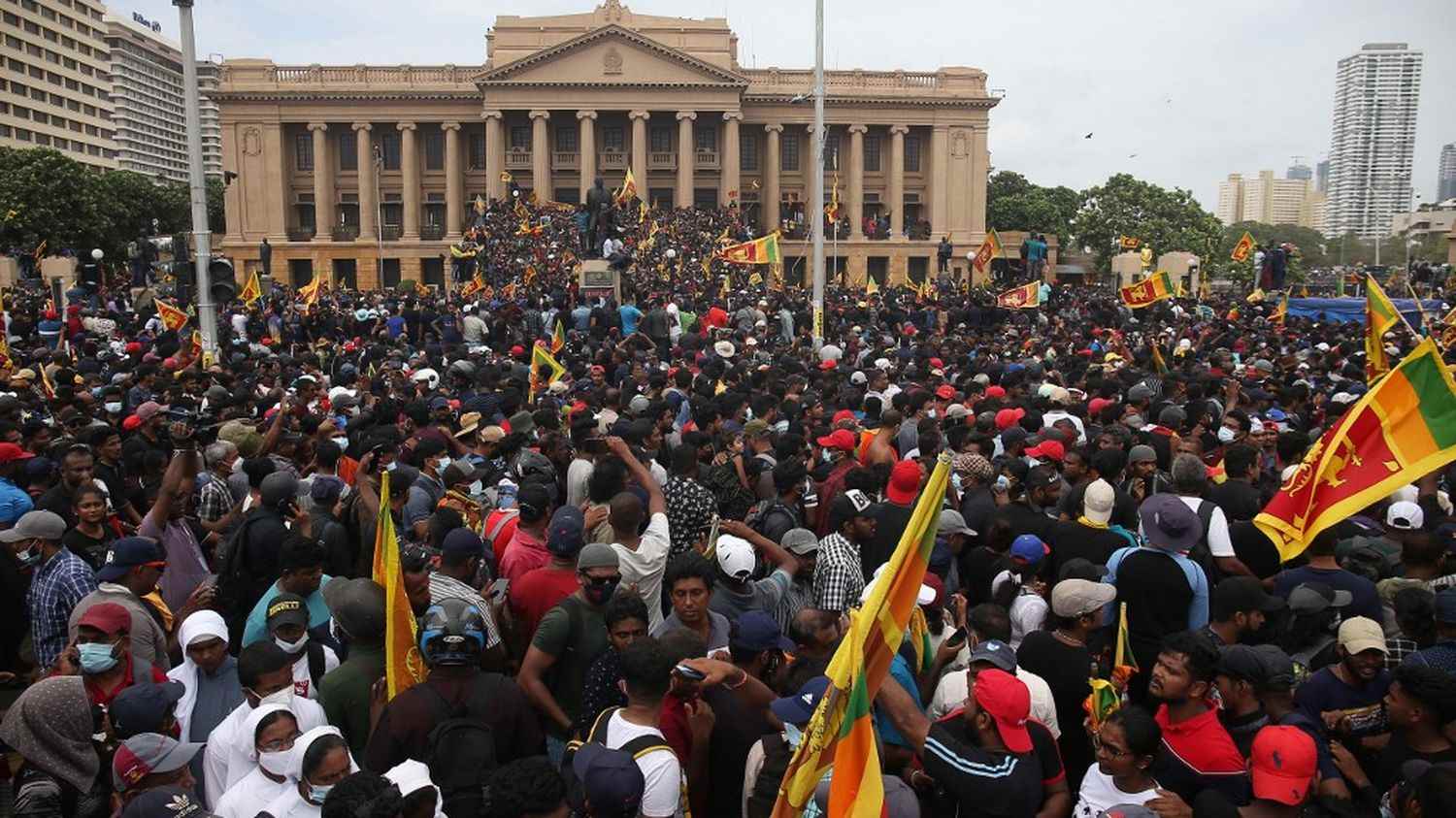Who is in charge of Sri Lanka? President Gotabaya Rajapaksa fled the presidential palace in Colombo before protesters invaded to demand his resignation on Saturday July 9. The Prime Minister also announced his resignation. We explain to you what we know about these riots, two months after violent clashes which had already led to the resignation of the previous head of government.
The presidential palace and the residence of the Prime Minister stormed
Several hundred demonstrators invaded the presidential palace located in Colombo, the economic capital of Sri Lanka, as well as the enclosure of the ministry of Finance and the presidential offices, according to Reuters*. Hundreds of thousands of demonstrators also gathered in the surrounding streets to demand the resignation of the head of state. Some then entered the official residence of the Prime Minister, Ranil Wickremesinghe.
Videos broadcast live by some protesters show the crowd entering the presidential secretariat compound. Some bathed in the swimming pool or lay down amusedly in the bedrooms of the residence.
Sri Lanka: Video showing protesters bathing in the swimming pool of the presidential residence in Colombo.
6.936707959703428, 79.84282769824112
Geolocation: https://t.co/hK1pzYErNy pic.twitter.com/o3cewgkBaS— Rebecca Rambar (@RebeccaRambar) July 9, 2022
Security forces had imposed a curfew on Friday, but it was ignored and then lifted after threats of legal action by the opposition. They tried to disperse the crowd by shooting in the air and using tear gas. Three people were shot and killed and 52 others were injured, according to Colombo’s main hospital.
The president on the run, the Prime Minister will resign
Gotabaya Rajapaksa fled minutes before the protesters arrived at around 10 a.m. local time. The President, elected in 2019, “was escorted to safety” and “is protected by a military unit”, according to a Defense source to AFP. But government officials admitted they were unaware of Gotabaya Rajapaksa’s intentions. “We are waiting for instructions”a senior official told AFP.
After an emergency meeting to which the leaders of the political parties were invited, Prime Minister Ranil Wickremesinghe proposed to resign to form a new government of national unity. “To ensure the continuity of government and the safety of citizens, I accept the recommendation of party leaders today to make way for an inclusive government”wrote the official on Twitter*, adding: “I will resign from my post as Prime Minister.”.
To ensure the continuation of the Government including the safety of all citizens I accept the best recommendation of the Party Leaders today, to make way for an All-Party Government.
To facilitate this I will resign as Prime Minister.
— Ranil Wickremesinghe (@RW_UNP) July 9, 2022
Ranil Wickremesinghe was brought back to power in May after the resignation of then prime minister and brother of the president, Mahinda Rajapaksa, in the face of previous protests over the economic crisis.
Sri Lankans exasperated by the economic crisis
The demonstrators accuse Gotabaya Rajapaksa and his entourage of being responsible for the economic crisis that the country has been going through since 2021, the worst in its history since independence. Protesters have been camping outside the offices of the presidency for three months. In May, demonstrations had already left nine dead and hundreds injured.
The country suffers from widespread shortages: it no longer has enough fuel to meet its usual consumption, power outages are daily and consumer prices rose by 54.6% year on year in June, according to the Bank center*. The national currency has lost almost 50% of its value since March, and the country, deprived of the windfall of tourism with the Covid-19 crisis, has been unable to pay its external debt of 51 billion dollars since April. The country has started bailout talks with the International Monetary Fund.
A situation made worse by a series of political decisions, such as a forced switch to 100% organic farming in April 2021 which caused a collapse in production and which was canceled six months later. Faced with these difficulties, 86% of families eat less or skip entire meals, according to the World Food Programme*. Schools and non-essential government services have also been closed until further notice*.
* Links followed by an asterisk are in English.
